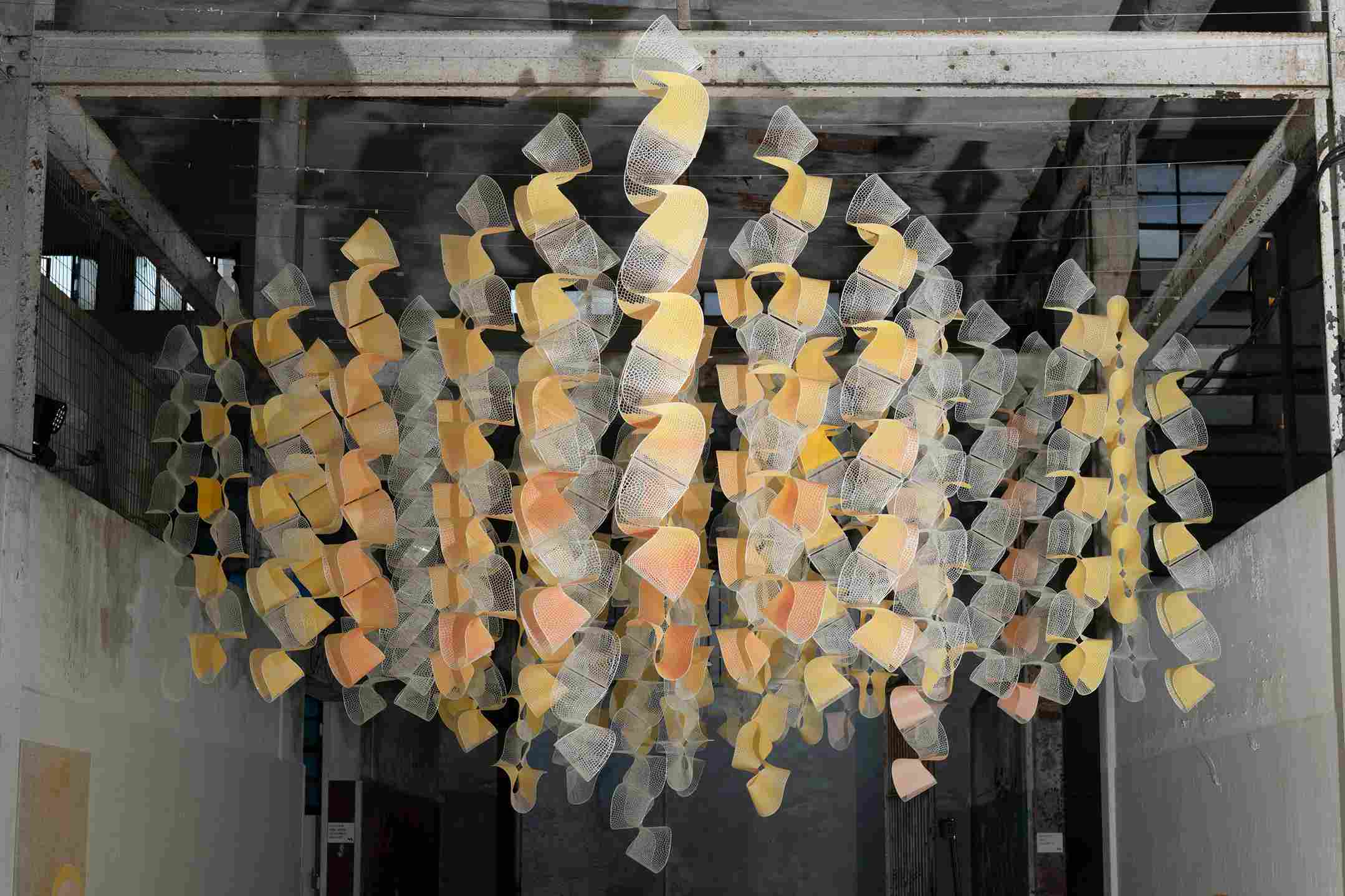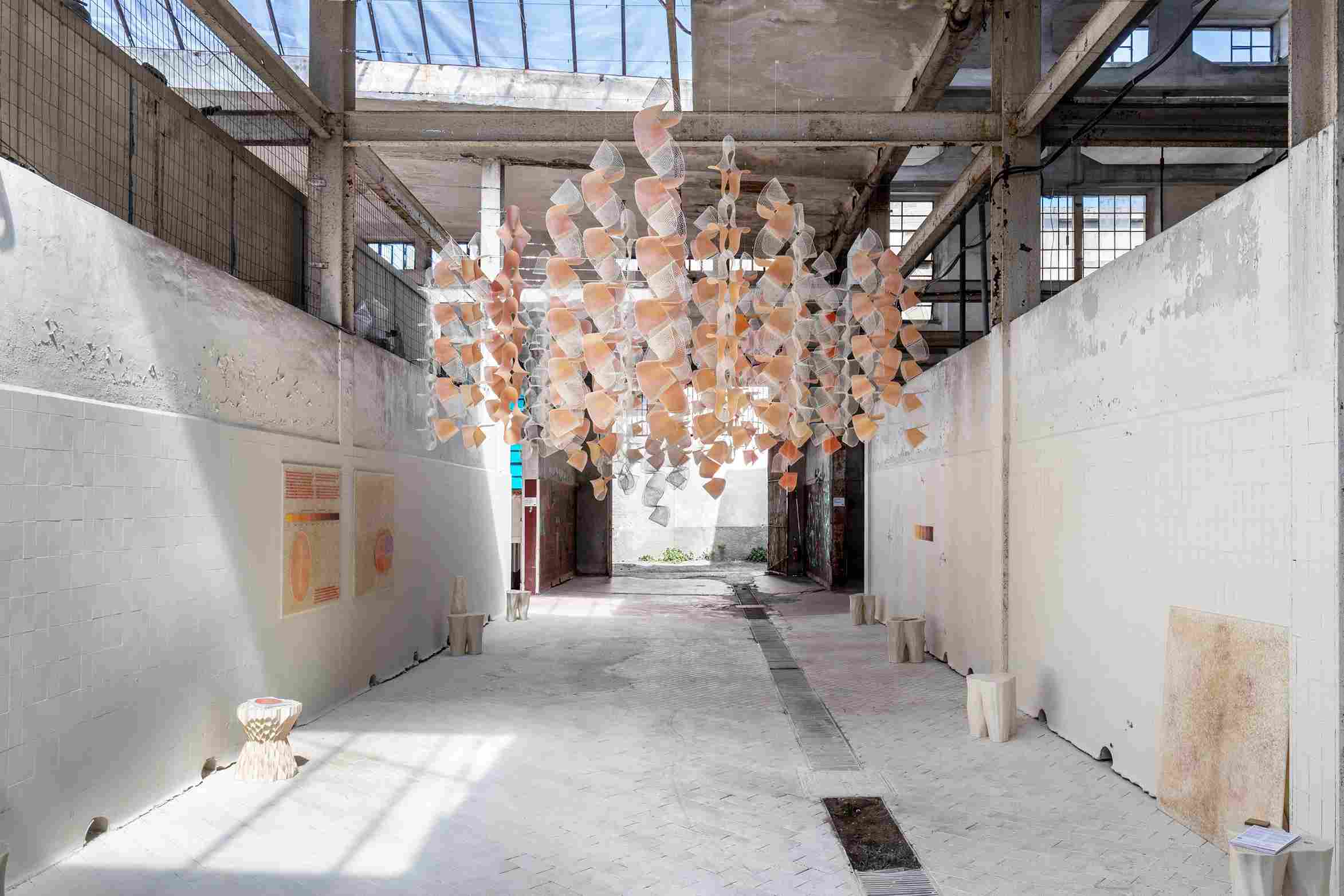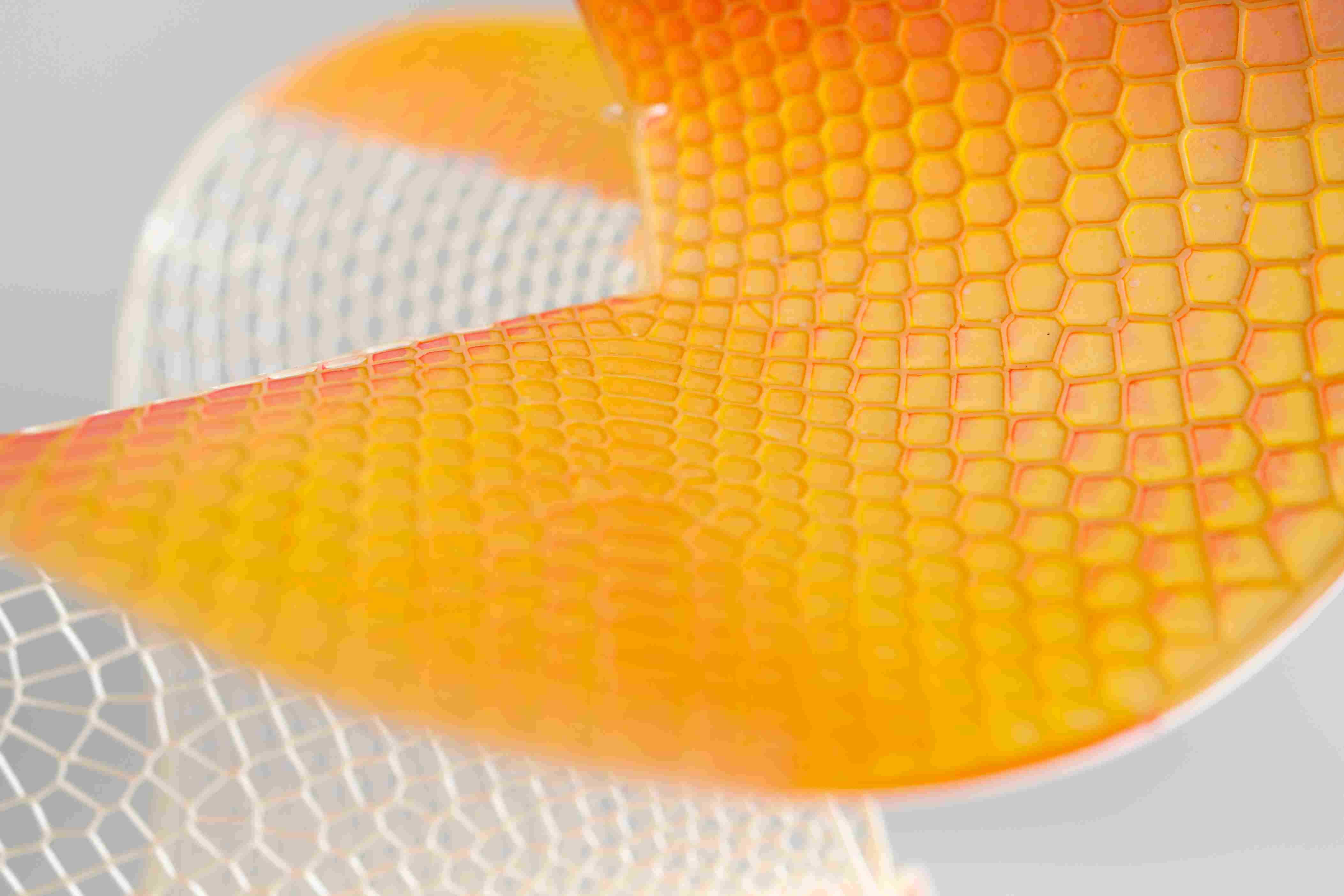
During Milan Design Week at ALCOVA 23, Crafting Plastics Studio and DumoLab Research unveiled their latest collaborative project Sensbiom 2. This interactive installation showcases a vision of the future where objects assist humans in reconnecting with the planet using environmentally responsive materials derived from renewable sources. Here is a detailed report on SURFACES REPORTER (SR).

Sensbiom 2 explores environmentally active biomaterials and is made of a cellulose- and algae-based composite material infused with photochromic pigments.Image credit: Daniela Trost
Ultraviolet radiation (UV), which is invisible and imperceptible, poses a significant threat to human health. The Global Solar UV Index (UVI), established by the World Health Organization, indicates that a UVI above 3 can rapidly damage the skin and eyes. Despite the highest UVR levels being closer to the equator, Milan experiences a UVI of 6 in spring and a concerning 10 in summer. While chlorofluorocarbon emissions were banned two decades ago to address stratospheric ozone depletion, the current climate change resulting from fossil fuel combustion has led to a substantial increase in global UVR, causing DNA damage to all living organisms.

Sensbiom 2 tackles this issue by utilizing a series of biopolymer lattices that change colour, providing a visual representation of UV exposure. Image credit: Agnese Bedini Piercarloquecchia Dslstudio
Sensbiom 2 tackles this issue by utilizing a series of biopolymer lattices that change colour, providing a visual representation of UV exposure. By showcasing real-time changes in solar radiation, the installation aims to raise awareness of the invisible threats affecting the eyes and skin of millions of people worldwide. Sensbiom 2 explores environmentally active biomaterials and is made of a cellulose- and algae-based composite material infused with photochromic pigments. As the level of ultraviolet radiation increases, the material transitions from yellow to orange and red.

As the level of ultraviolet radiation increases, the material transitions from yellow to orange and red. Image credit: Adam Sakovy
The project raises thought-provoking questions such as, how does radiation impact our well-being? What substances are present in the air we breathe? Can materials communicate what the human eye cannot perceive and even respond to or reverse these effects? In an era of accelerating climate change, what role can ecologically active bio-composites play in safeguarding human and non-human health? Sensbiom, thus, seeks to mend the human-nature relationship by exploring the potential of biomaterials to heal and restore our connection with the natural world.

The team envisions its applications in facade coatings, wearables and outdoor objects, Image credit: Adam Sakovy
Through this exploration, the team seeks to establish new connections between humans and the ever-changing environment. The team envisions its applications in facade coatings, wearables and outdoor objects, and is reportedly interested in incorporating proteins into the materials to respond to various environmental elements.
Image credit: Crafting Plastics Studio